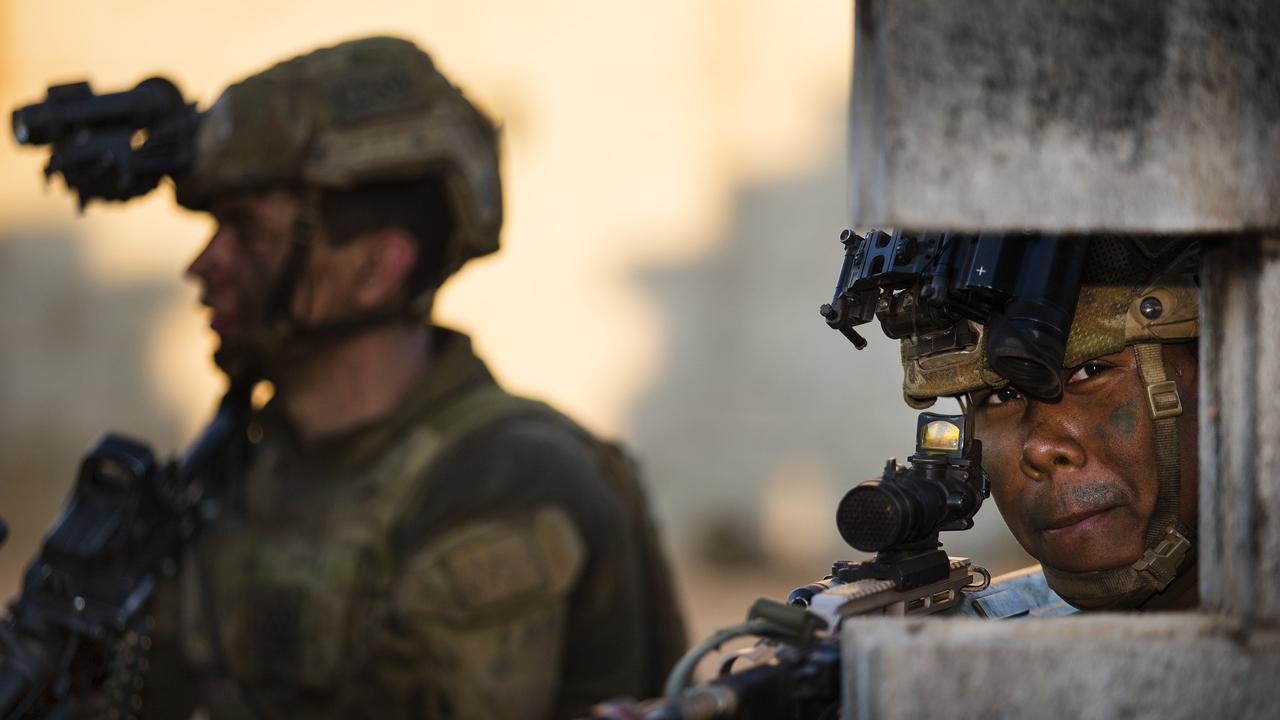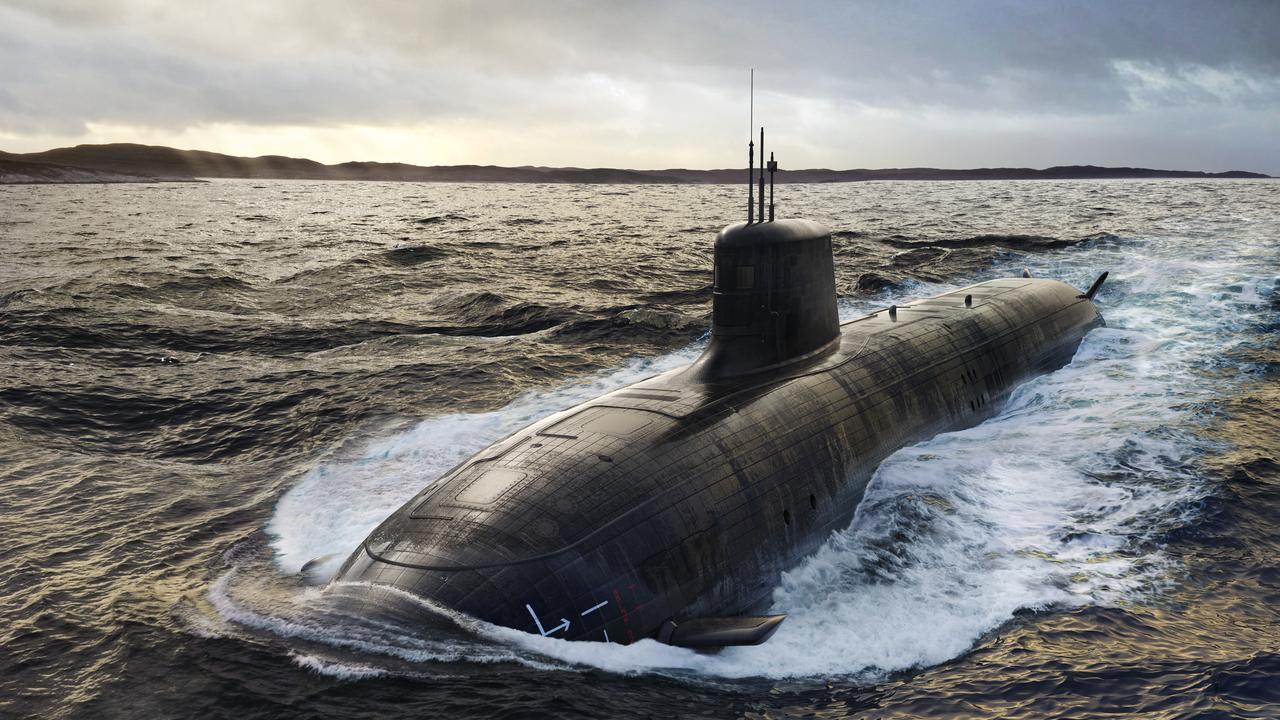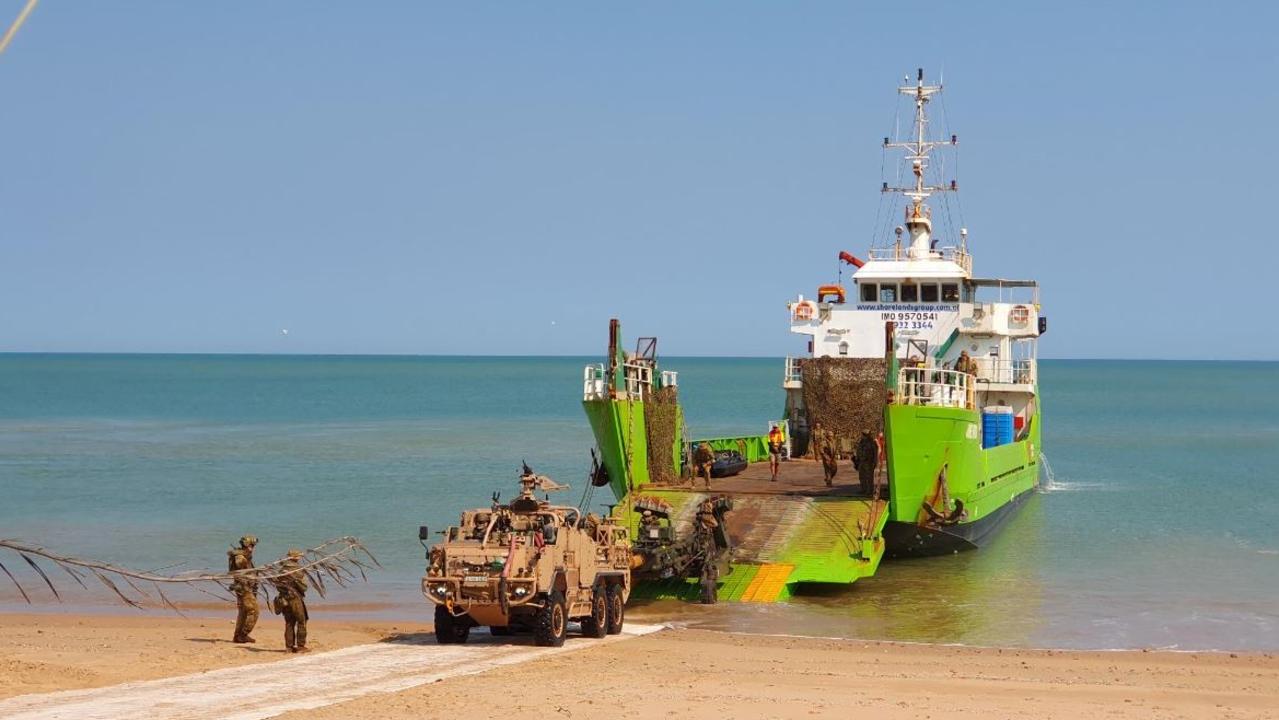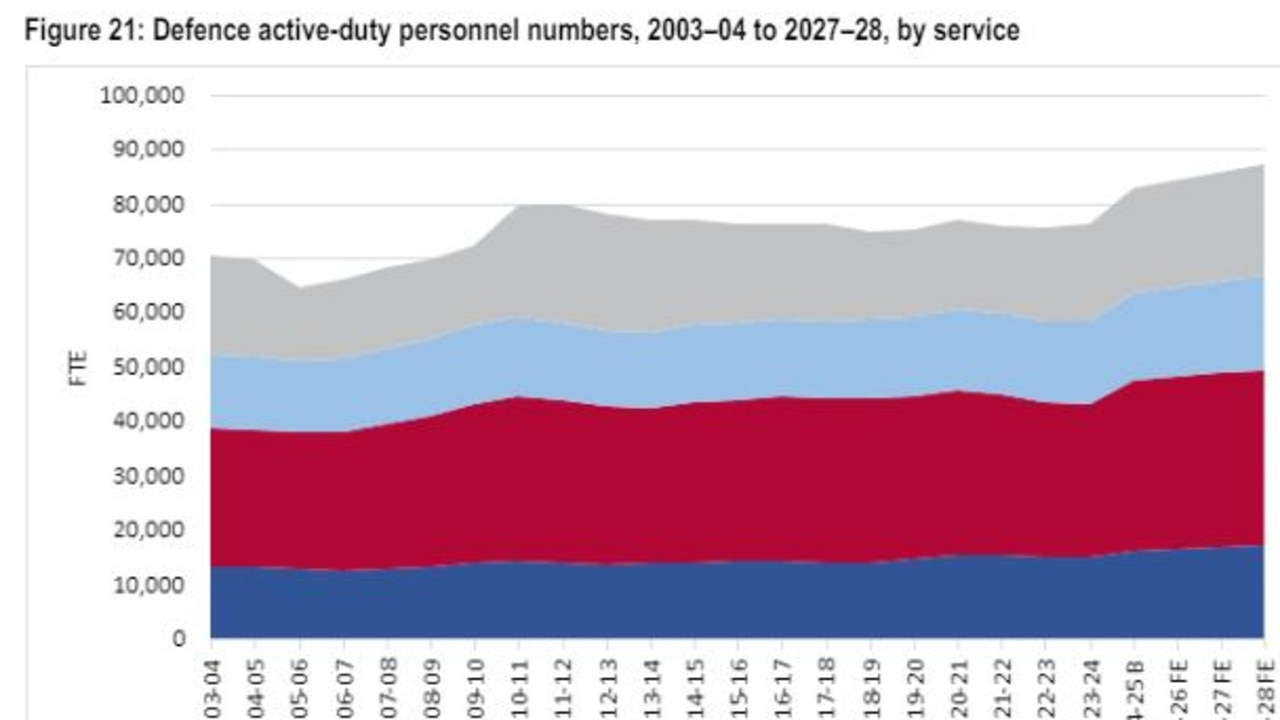Australian Strategic Policy Institute questions Albanese government’s defence investment, ADF’s military capability
Billions has been poured into defence, including in the Top End, however, a new report is urging the government to spend even more on military capability, warning the country is unprepared amid ‘the gravest geopolitical period in generations’.

News
Don't miss out on the headlines from News. Followed categories will be added to My News.
Australia’s readiness to go to war in the next decade is under question, with a new report warning the government’s rhetoric around regional tensions is “not being matched” by defence investment.
This month, the Australian Strategic Policy Institute released its Cost of Defence report, which examined the 2024-25 Budget’s military and strategic implications.
The report claimed Australia’s defence budget was inadequate amid increased tension across the Indo-Pacific.
“The Albanese government and the Coalition opposition agree that we are in the gravest geopolitical period in generations and this is only going to intensify,” the report said.
“But as the Australian Strategic Policy Institute’s latest Cost of Defence report finds, the rhetorical urgency is not being matched by action in the form of defence investment.”

The report warned the government’s latest budget, released in May, would not be sufficient in the event the Indo-Pacific region was “to deteriorate quickly”.
“In particular, this year’s budget priorities are not directed towards strengthening the Australian Defence Force’s ability to fight in the next decade,” the report said.
“This is not doom-mongering; the government has acknowledged that the warning time before any conflict, which had long been set at 10 years, has shrunk to effectively zero time.”
Despite the May budget promising an extra $50 billion over the next decade, the report maintained it would be of little difference to the nation’s warfighters.
“If war were to break out at any time in the next 10 years, our military would essentially fight with the force it has today,” the report said.
“Based on current resourcing, nothing significant will change over the decade.”

Of Territory-specific interest, the report also questioned the progress of Project Land 8710, aimed to deliver the army’s littoral assault craft which Darwin’s 1st Brigade expect to use.
“Without any detail on the rate of investment in the Army’s littoral manoeuvre capabilities over the forward estimates, it’s likely that only limited numbers of major land capabilities can be projected offshore.”
The report said the omission of Land 8710 brought into question the security of Australia’s north and the Top End’s ability to provide humanitarian assistance to the near-region.
“ … it risks the ability of the integrated, focused ADF to undertake rapid stabilisation and humanitarian assistance and disaster relief operations and credibly protect our northern maritime approaches.”

Beyond investment, the report also examined the ADF’s retention crisis, with the organisation again expected to fall short of its full-time workforce target.
“Several factors have contributed to the ADF’s inability to grow its workforce – they include highly competitive labour markets, record-low unemployment levels, low job satisfaction and a negative workplace culture.”
In 2022, the Morrison government announced defence’s workforce numbers would increase to 101,000 by 2040, with a permanent force of 80,000.
Currently, the ADF has an estimated 58,242 full-time force – more than 5,000 personnel shy of where it needs to be to meet its 2040 target.
More Coverage
Originally published as Australian Strategic Policy Institute questions Albanese government’s defence investment, ADF’s military capability









